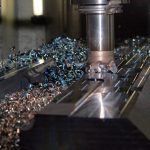Do not close any Design Phase without this. This extensive design review checklist is to be used at the end of the design phase of any product, to avoid potentially basic or stupid mistakes that may later be very costly or defeat the complete project, be dangerous or be devastating to the company’s image.
Contents
Note: 6 tips on how to perform a good design review are included at the end of this post.
It is strongly recommended (and mandatory in some industries) to have a formal Design Review at the end of the Design Phase. Refer to our Phase-Gate article for details on this project model.
This review is ideally performed with experts of all concerned fields, but we also strongly suggest including engineers and designers who were NOT included in the design, to bring their fresh views.
Do challenge what seems obvious or “we always did like that before”
… condition, manufacturing, legal, or usage may have changed since your last review!
Many of the following items in the Design Review Checklist may be in your Specifications, to be later checked by your Verification and Validation (V&V) process … but maybe not. This list is trying to be as exhaustive as possible, but obviously not applicable and not complete for all domains and products.
We are including versioning of the list so that you can update your files or process whenever this list is updated.
Design Review Checklist
version 1.08
 RegulationYes it’s a must, but complex and continuously evolving | |
Does the product meet all applicable regulations? | Do you have the latest version of the standard? Of all forecasted countries? not only the head-office Also the standards in draft mode currently? Do you have a process in place to alert on evolving standards? |
Does the product have all the required labels? (in this design review checklist so as in the legal definition, “label” includes all markings, on the product, packaging, in any accompanying document) | Legal labeling of the product, including
… with all local marking or translation or approvals for all the intended marketS (and images and pictograms may save you a lot of translations here) Check our Plastics Design Tricks Collection article for plastic parts markings |
 Environmental, Robustness, and AgeingFrequently a tradeoff between quality, weight, and price … Advice: be very careful if averaging the use condition to some mean or average, aka “product is on average at 25°C”, or “product is used on average 2h a day” … some users may be continuously at one side of the scale while some others will be continuously at the other extremity, thus making you a correct average calculation, but all these products WILL fail prematurely. | |
| What is its IP code (Ingress Protection Code or Index)? | check IP code link for the IPXX table can the product be rotated upside voluntarily and then required a higher IP rate? and accidentally? |
| Will it stand weather corrosion conditions? | 96h or 100h (frequent values) salt mist test is frequently not enough for a product that can be close to the seaside (not even mentioning boat conditions) Is there any dissimilar pair of metals or alloys having different electrode potentials? Including frequently basic overlooked parts (screws, washers, springs …) Were cleaning chemical agents taken into account? Do you recommend some particular ones? Ex.: polycarbonates (PC), even at big thicknesses, in fact even faster at big thicknesses, if there is a local constraint, can crack within minutes if some solvent (MEK) is applied on its surface. |
| Does it withstand the cold? | Indicating minimal temp in the IFU may not be enough. Mind involuntary misuses. Batteries (based on chemistry, the cold always slows down its reactions) Have you done specific aging and cycle tests? Lubricants and sealings becoming harder and losing their performance and even blocking the moving mechanism (piston type) or lowering the flow/pressure (regulator) Many materials become brittle. Tested? |
| Does it withstand the heat? | A phone under the windshield of a car in the summertime will be exposed to much more heat than in Death Valley … Also, mind some concentrating/magnifier effect. Ex.: the mirrored windows of some elegant modern New York building with a concave shape was concentrating the sun on the nearby street 😉 |
| Does it withstand UV and sun? | Related but not necessarily the same as temperature. Tested? |
| Does it withstand aging? | Related but not necessarily the same as temperature and UV Extremely tricky with some plastic and rubber material (Nitrile, EPDM …): it may come back literally to dust in 10-15 years even if well stored, with no constrain, and not exposed to sun or temperature. Or fail in 2-3 years if constraints or tight properties are needed. Does your product include some gluing? Have done some accelerated Ageing? Accelerating aging simulations, if not backup with normal aging, with too high temperature, or not appropriate Aging Factor (Q10) is valid only with history or reference. Plastic additives (color, UV resistance, filler …) can change properties a lot compared to a know reference. Mind dust or even more sand. Fine not perfectly sealed mechanisms will not survive 5 minutes on the beach. |
| Does it withstand a drop? | Even if no regulation, a quality product or costly product should withstand typical user misuse. Ex: for a displaceable good, dropping from the height of a table could be expected to be “normal”. While a breakage could be understood by the user for a cristal Champaign glass, maybe less and less for a slippery glass-coated thin phone. |
| Has MTBF (or another lifetime unit) been defined and evaluated? | See Mean Time Between Failures theory. Or is this product in a High Availability class? |
Intellectual Property (IP)Once the product is out, or if marketing has communicated, it’s too late… so this should be included in any Design Review Checklist also if not already too late because of any external communication. | |
| Is any patent already existing (that your product would infringe)? | Can be made knowingly (careful!) … especially if another patent is close to expiring. (for the original owner is the cost of attorney > gain on the remaining period ?) In all distributed countries? |
| As your product some aspects that can be patented? | Sometimes seems obvious to the designer, but is not and is indeed novel… In your field? or in other domains? |
| Is anyone who contributed listed on the patent? | Colleagues, but external partners also (mandatory to be listed in patent, even if they may have already been paid for this) |
| Same question as above, but applied to the product name or trademark? | Tip: looking at a similar product name in search engines is not always done …. and brings already a lot in no time and no money long before any attorney work. |
| Have you registered the site name? | For consumer goods or high volumes: and its variants? With “-” or “_” if the name is in several parts? plural, singular variants also? And various TLDs (net, org ….)? |
 ManufacturabilityManufacturing process, suppliers, their location compared to the company and to end customers, and cost should be part of any Design Review Checklist. It is frequently said that 80% of the product price is already frozen at the design phase. Do not ask the purchasing team to make miracles on suppliers hunting too late. | |
| Were the best materials and processes chosen for EACH part? | Does the material fit the function? (& has a “fff”, Fit Form and Function analyses been made at all?) Cost Recyclability (see below) |
| Are the drawings respecting the chosen process? | achievable tolerances of the process, possible undercuts or not … |
| Are the drawings respecting local drawing standards and will they be well understood? | any over-constraint dimension? units, language if any, type of projection Be particularly clear, or maybe have a dedicated document, if outsourcing to far-east countries as logic, focus & ways of working are different Tip: values into brackets are typically a source of confusion between countries, so as a way to indicate control dimensions or values to be adjusted in the tool or at production time. |
| Are the drawings made for a functional quotation or for final manufacturability? | At the design phase, we recommend the first one, but depending on the later process, that may add an additional level of drawing, increasing complexity. This must be evaluated with the manufacturing/supplier on a case by case. |
| Are you using a technology killing your WIP? | Some technologies need waiting time in the process
… but can sometimes smartly be integrated into the rest of the process |
Are you integrating a technology with high variability? (with DfSS in mind) | Manufacturing and Quality will reduce it as much as possible, but some technologies have more inherent variability than others:
|
| Has a control plan already been defined? |
… but avoid over quality by asking crazy unnecessary tight tolerance, “just because we are XXXX” (replace by a famous company or rich industry) |
| Have you already had discussions with the manufacturing partners? (internal or external) | As above 80% of the cost is decided during the design phase, with design choices, these aspect is key for feasibility and design-to-cost If external, do you have some Quality contracts with external partners and suppliers? And some NDA? (relate to IP protection above) |
 RecyclabilityA bigger and bigger constraint nowadays, but also a big opportunity for new products and behaviors. To be developed in this design review checklist. | |
Are the materials recyclable? Are the materials labeled? | Check our dedicated articles on Recyclability |
| Is separating the different materials easy (even by breaking them) and visually obvious? | Clips or screws may seem convenient at first, are not the fastest way for a pro to dismount a product for recycling. Tip: there can be some voluntary local fragilities perfect for a pneumatic hammer, but these ones should be made visible (markings) or obvious |
 SafetyRelated to standards, ergonomics, and many aspects in all its life cycle (dedicated article on Life-Cycle design) | |
| As any risk analyses and xFMEA been performed? | Mandatory in some fields, but you may want to conduct one anyway Are you relying completely on simulation and calculations -compared to physical tests- ?. Not recommended … but at the very least, do validate your model, your hypothesis, and if mission critical, even your software. |
| Including potential misuses? | Some say that warning in the IFU may not be enough … long debate |
| Including diverted usage of the product? | |
| Is your product in contact with the skin? | Watch for allergies and toxicities! Especially with plastics, even more, if they are soft or flexible (additives …) but not only Of course, Children, Food, or Medical industries have dedicated regulations about these, but that concerns all touched products (phone protection sleeves, sofas, chairs, home appliances …) |
Is your product incorporating or generating powder in a closed volume? Examples:
|
The finer the powder the more the two effects above |
Are plastics subject to fire? | If your product is made of plastic and you need some level of fire resistance … do you respect all minimum thicknesses for the external walls, the inner walls, or the ribs? (plastic materials are frequently guaranteed fire-resistant starting from a minimum thickness) |
| All the previous …. at all stages of the product, not only its use? | Often forgotten. Safe from manufacturing to packaging, to shipping, storage or shelf if applicable, unboxing, usage of course, then recycling? |
 ErgonomicsA field where modern product shines (and is expected) | |
| Any ergonomic study? | Even in industries where this is not mandatory, do at least some tests with a non-technical colleague who has never seen that product yet. Be the fly on the wall and observe without any comments his or her first usage, including box opening and IFU reading if any. You can record these usages if the person is OK and does not change his behavior because of this. You should have no hierarchy link with these persons… Be very careful with quick conclusions like “he/she did not get it right, but the user will”. Your paying customers will likely be very less mindful, patient, and forgiving than your paid colleagues. |
 CleanabilityOnly in some industries (food, medical, some home appliances, kids’ equipment, or toys…). Refer to the dedicated 20 Best Tips to Design for Cleanability article. | |
| Material choice and roughness | beware of sticking or tacking surfaces that may have great ergonomics or look … at the beginning only (rubber, over-molded parts …). Refer to the aging chapter above Avoid too deeply molded textures on plastic surfaces. |
Are all cleaning means easily available? (or do you want to sell them as spare parts or services?) | Are special physical tools or cleaning agents/ chemicals, or machinery needed? Business opportunity or customer nightmare? Are all tools and chemicals listed in an IFU or maintenance manual? Is the cleaning procedure defined in the IFU ? or are the authorized service(s) ready? |
| External shapes | no internal angles without radius. If a very clean industry, these radii should be at least the ones of the tools that will be used to clean it (possibly finger radius!) Same for gaps access: are all openings big enough to access inside? (but be careful not to compromise safety by doing this) Surface roughness? no textured plastics? |
| Internal volumes | is volume completely sealed (welded, glued … depending on product and conditions, an o-ring may not be enough over time)? or at least self-draining? |
We strongly suggest
you complete and maintain live this Design Review Checklist with your specifics,
… and maybe share your additions with us in the comments box on the right
How to Perform a Good Design Review?
Any product design review will vary depending on the specific project, technologies used and the teams involved. However, there are some general tips that can help make your product design review more effective:
- Make sure you have a clear purpose for the scope of the review. What specific aspects of the design do you want to focus on? What questions do you want to be answered? Having a company template and a well-defined goal for the review will help keep it focused, on track, and finally successful and on time.
- Gather feedback from a variety of stakeholders. In addition to the designers themselves, solicit input from others who are familiar with the project, such as users or customer support, developers, business experts, and manufacturing representatives. This will help ensure that all relevant perspectives are considered.
- Have all participants, especially the designers, be open to criticism. The whole point of a review is to identify areas that can be improved, so it’s important to create an environment where constructive feedback is welcome. Encourage everyone to speak up and share their honest opinions, while at the same time the meeting leader should somehow guide individuals prone to individual criticism. The solution is to be evaluated, not the authors behind it.
- Take time to discuss the design in detail. A rushed review will likely miss important details, so make sure you allow enough time for a thorough discussion. Pay attention to both the big-picture issues and the small details that can make or break a design. Imagine various scenarios, potential misusages or suppliers shortage, or typical defects. The design review checklist obviously takes place here.
- Document the decisions made during the review. This will help ensure that everyone is on the same page going forward and will also be useful for future reference and be part of the risk analyses if your process or industry requires it.
- Build your own design review checklist. This will help all your next developments by feeding the company know-how.
By following these six tips, you will have a more effective product design review, and improve the overall quality of your current and future products.
